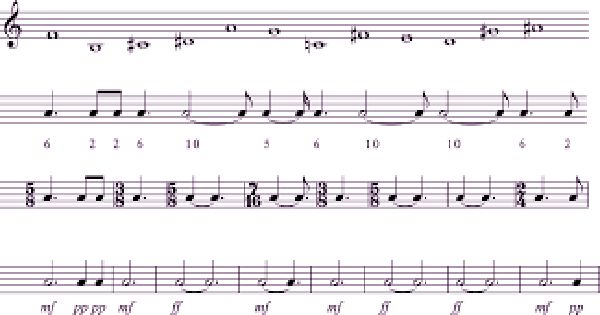There are many parallels between science and music. Research papers are written as a result of experiments, just as melody and melodic discovery and notation are found in music composition. Yet innovation is needed for progress in both cases. Researchers in South Korea have used a mathematical framework to try and prove this idea of innovation using samples of 900 compositions of Western classical music.
The results of this analysis, published in EPJ Data Science, indicate that after selection, Rachmaninov, Brahms, and Mendelssohn were the most prolific novelists of the Baroque (c.1700–1750), classical (c.1750–1820), and Romantic periods
(c.1820–1910). In the research paper, the authors describe the meaning of the two categories: “Innovation represents the measure and the uncertainty of the generation, measuring whether a work is different from the past than the past. Influence
measures its success and impact as an inspiration for future creation and measures how much has been mentioned for future work”.
The 19 most famous composers of the period, including Mozart, Beethoven, and Chopin, were given work, novelty, and influence. These scores were based on how their pieces differed not only from the work of other composers but also from their own. The codeword sequences were then compared with all other works to determine how novel and influential each author was. Both scores were created using a computer model that divides each section of music into “codewords”. Described
as the “symbolic advancement of chords”, the codewords are generated from each set of notes played simultaneously and also consider their octaves.
The music we studied is credited with creating many musical styles that are still influential today. Juang Park, the co-author of the study, said: Our model helps us calculate the degree of melodies and melodies shared between our past and future work and observe the evolution of Western musical genres by
demonstrating how prominent composers can influence each other. The musical period with the highest innovation score was the Romantic era, which, according to the authors, “credits romantic composers for breaking up widely recognized music conferences that are in clear agreement with the most widely accepted thesis”. However, the researchers warned that innovation and impact scores are not always correlated.
Park said, “While creative work requires innovation, it may not be responsible for all the creative and artistic qualities created by the composer and subsequent composers to create melodies and melodies scattered throughout the melody. That’s probably why more novelists didn’t result in composers becoming more influential.” Indeed, Beethoven, who is arguably the most determined figure in the history of Western music, has rated mathematics as the bottom line of innovation. It comes as no surprise, however, that his work was influential in later areas of research, especially during the period from the classical to the romantic transition (c.1800-1820).
Since the group used piano compositions by only 19 composers, they warned that it was unknown if any other composers would rise to the top if all their compositions were considered. Nevertheless, researchers hope that their scientific approach can be applied to descriptive or visual works of art to enable
“a new understanding of human creativity and the dynamics of the advancement of intellectual and cultural products.”















